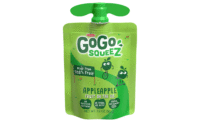Hershey's 2014 Sustainability Aims
The Hershey Company will work with its suppliers to achieve 100% traceable and sustainably sourced palm oil by the end of 2014.

This mature palm tree is approximately 20-25 years old and is located on a palm plantation in Malaysia. Palm exports from Malaysia and Indonesia make up approximately 85% of the palm oil market.
"The Hershey Company is committed to continuous improvement and transparency in our sustainable sourcing efforts," said Frank Day, vice president of Global Commodities. "Our move to source 100% traceable palm oil is the latest step forward in our efforts to ensure we are sourcing only sustainably grown palm oil that does not contribute to the destruction of wildlife habitat or negatively impact the environment. Our sustainable sourcing programs continue to improve and evolve and progress is reported annually in our Corporate Social Responsibility Report."
New Supplier Requirements
While The Hershey Company is a very small consumer in the palm oil market, the additional step of 100% traceability will assure that the palm oil in its supply chain is produced using the most rigorous sustainability practices. To achieve this commitment, the company will work closely with its suppliers and industry experts to ensure palm oil comes from sustainable sources. Suppliers will be required to independently verify that sources:
1. Do not contribute to deforestation or the destruction of wildlife habitat
2. Do not clear high carbon stock forests
3. Do not contribute to peat land expansion
4. Operate in compliance with local laws and regulations
The goal of these requirements is to identify palm oil producers that are engaging in unsustainable practices, work with suppliers to remediate these actions and, if necessary, remove these producers from Hershey's supply chain.
In November, Hershey's palm oil sourcing efforts were recognized in the World Wildlife Fund's 2013 Palm Oil Buyers Scorecard, where Hershey scored 10 out of a possible 12 points, with 12 being the highest score.
Looking for a reprint of this article?
From high-res PDFs to custom plaques, order your copy today!







